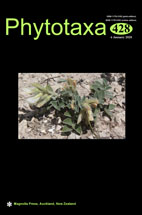Abstract
The great diversity of the genus Mimosa and the difficulty in the circumscription of its species and varieties based on morphology have encouraged the search for characters in other sources of evidence such as wood anatomy, which provides characters of taxonomic importance. The main objective of this study was to identify characters with taxonomic value for Mimosa; we studied the wood anatomy of eight tree species in Mimosa sect. Batocaulon from Mexico: Mimosa acantholoba, M. bahamensis, M. benthamii, M. hexandra, M. leucaenoides, M. tejupilcana, M. tenuiflora, and M. texana belonging to eight series: Acantholobae, Bahamenses, Distachyae, Bimucronatae, Leucaenoideae, Plurijugae, Leiocarpae and Boreales, respectively. One stem fragment (80 cm in length) was collected at 80 cm above soil height, from three plants per species. Twenty-five measurements were taken per individual for 15 anatomical characters. Three species have ring-porous wood and five species have diffuse-porous wood; the species differ in colour, figure, in the prevalence of a certain type of axial parenchyma, in the tangential diameter of the earlywood vessels, in the number of vessels connected by confluent-aliform parenchyma, in the number of series of rays and in the presence or absence of crystal sand in the ray cells. These characters have taxonomic value at species level, but not at series level. At the section level, the presence of homocellular rays distinguished Batocaulon from other sections of the genus. Based on these results, we produced a wood anatomical identification key to the eight studied species.

